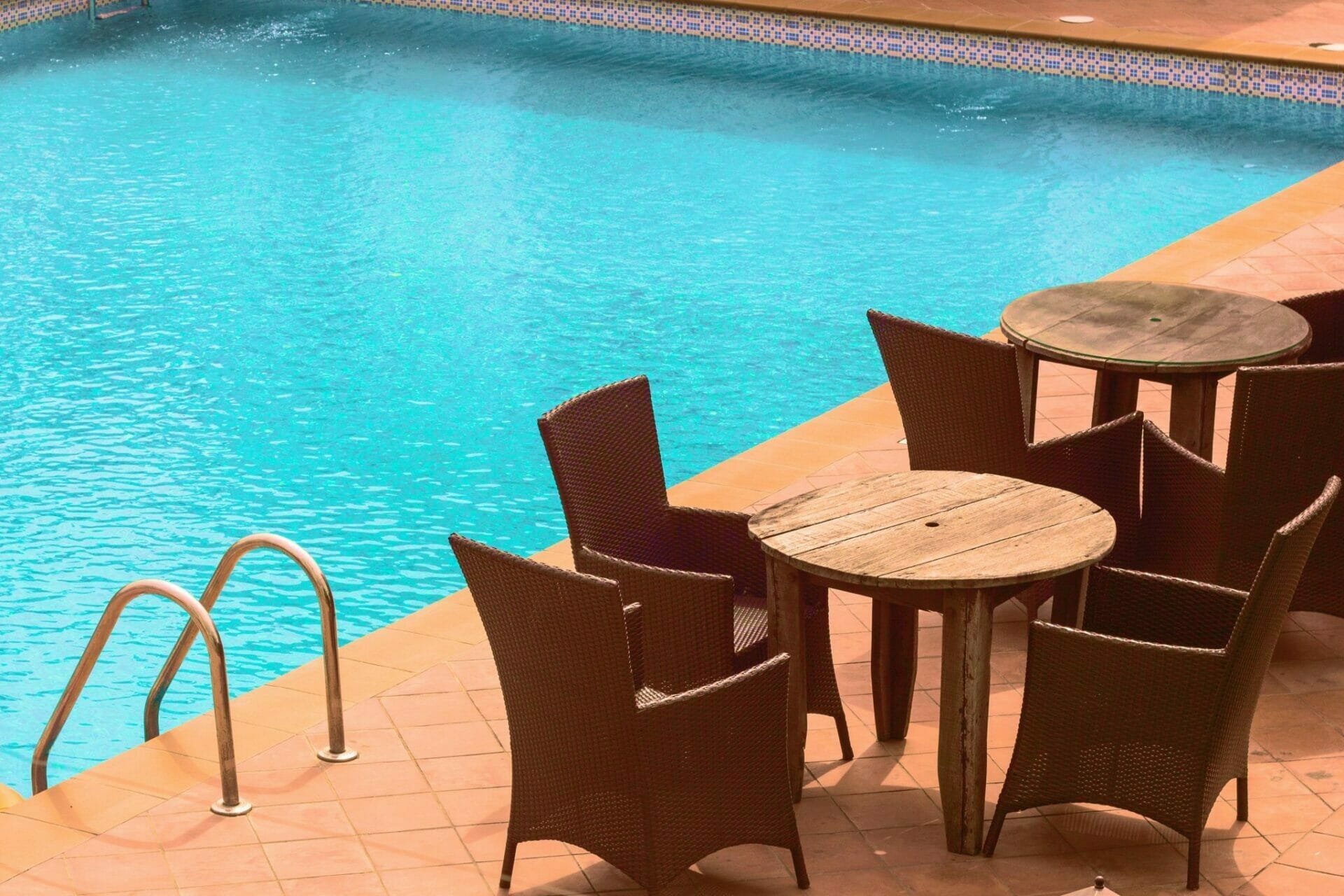A Heat Comparison of Different Patio Materials
There are a lot of decisions to be made when building a new pool. One that might be overlooked, however, is what will go around it. What is your desired look, what patio material will you use, and how hot will it get? Below we’ll take a look at some of the most common patios materials and how they fare on a hot day.
For the day in question, the outside temperature was 99 degrees with a heat index of 108. Although this particular test was performed in Virginia by River Pools and Spas, these temperatures are far from abnormal in Arizona. With the sun beating down, we will look at the temperatures of the patios themselves and the comfort level of standing on each.
The Results
Travertine
Temperature: 110° (cream) and 115° (beige)
The first option that came in at cooler temperatures was travertine. Travertine is more expensive than concrete, but it is very popular and gorgeous in appearance. The lighter, cream-colored option came in at the lowest temperature of the day.
Stamped Concrete
Temperature: 114°
This patio material is just like regular concrete, but the top is stamped during the drying process to add a new texture to the surface. Due to the light color, this option came in at the second lowest temperature of the day. Still, it was very warm to walk on, but bearable despite the high temperature.
Pavers
Temperature: 120° (earth-tone) and 126° (grey)
There are many pros when it comes to using pavers for your deck, however, the darker tinted samples used in this test were the hottest of the day. Both were uncomfortable to walk on, especially the grey variant, which came in at a whopping 126 degrees.
Other Options
Flagstone
Flagstone is another popular option, featuring a very natural look. While flagstone was not included in the test we’ve discussed, you should be able to closely estimate the temperature you will experience via color comparison to a material above.
Kool Deck®
If walking temperature is of high importance to you, Kool Deck may be your best route. Kool Deck® concrete topping is as strong and durable as the concrete base but provides a colored, textured surface proven to cooler than other patio options.
Overall, this test should give you a good idea of how hot your patio will be on a given day. The main contributor to heat is color, so keep that in mind as you research what material you will use. However, there are many other factors to remember when picking a patio. If you’d like to hear more about this topic, let us know!

